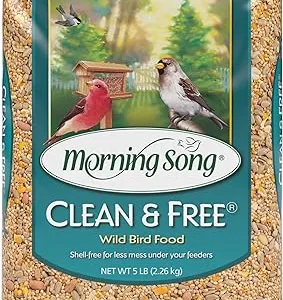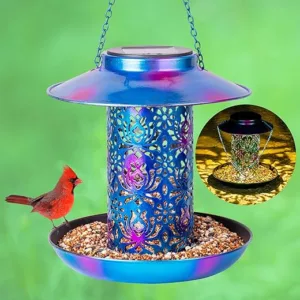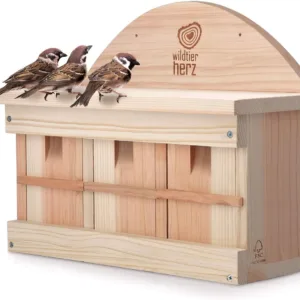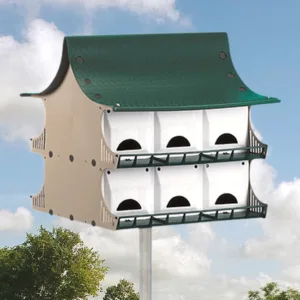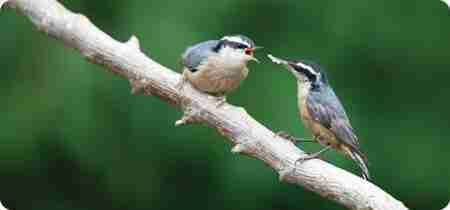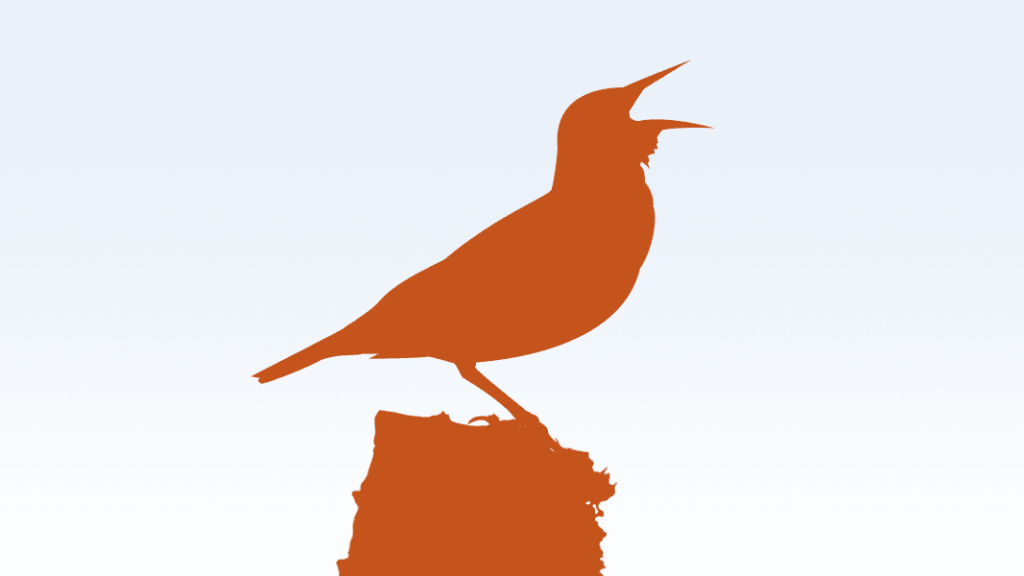Turning your backyard into a bird haven in Florida? Oh, you’re in for a treat! Imagine waking up to chirps, watching cardinals dart between the Sabal palms, and hearing the gurgle of a small fountain while warblers take a dip. Sounds like heaven, right? Let’s dive into the details of how you can bring that dream to life—one bird bath, shrub, and berry at a time.
1. Understanding the Importance of a Bird-Friendly Backyard
Birds aren’t just pretty flashes of feathers; they play critical roles in our ecosystem. They help control pests like aphids and caterpillars, keeping your garden healthier without the need for pesticides. Think of sunflowers and wildflowers that benefit from bird-assisted pollination, ensuring more vibrant blooms year after year. Birds also spread seeds, helping native plants thrive and maintain biodiversity.
Urbanization has taken away much of the natural habitat for birds. By transforming your backyard into a bird haven, you’re doing your part to give them a safe space. This isn’t just for their benefit; creating a bird-friendly environment nurtures a healthy ecosystem, which ultimately supports human well-being. Imagine a balanced garden where all life forms work together harmoniously.
Watching birds flutter around isn’t just good for them—it’s good for you too. Research shows that birdwatching can reduce stress and improve mental health. Their songs and activity bring a calming, natural ambiance to your space, turning it into a tranquil retreat.
-
Product on sale
 10-Pound Bag of Morning Song Clean & Free Shell Free Wild Bird Food – Premium No Mess Seed for Outdoor FeedersOriginal price was: $19.99.$17.99Current price is: $17.99.
10-Pound Bag of Morning Song Clean & Free Shell Free Wild Bird Food – Premium No Mess Seed for Outdoor FeedersOriginal price was: $19.99.$17.99Current price is: $17.99. -
 Kaytee No Mess Seed Blend Bird Food for Urban Birds on Balconies, Including Finches, Sparrows, Mourning Doves, and More, 5 lb$11.46
Kaytee No Mess Seed Blend Bird Food for Urban Birds on Balconies, Including Finches, Sparrows, Mourning Doves, and More, 5 lb$11.46 -
 Kaytee Ultimate No Mess Wild Bird Food Seed – Ideal for Cardinals, Finches, Chickadees, Nuthatches, Woodpeckers, Grosbeaks, Juncos, and Other Colorful Songbirds – 9.75 Pound$21.37
Kaytee Ultimate No Mess Wild Bird Food Seed – Ideal for Cardinals, Finches, Chickadees, Nuthatches, Woodpeckers, Grosbeaks, Juncos, and Other Colorful Songbirds – 9.75 Pound$21.37
2. Selecting Native Plants for a Bird-Friendly Backyard 🌱
Why Native Plants Matter: Native plants are like a well-stocked local diner for birds—they know the menu, they know what they love, and they’re coming back for more. Native plants and birds have evolved together, which means they are perfectly adapted to meet each other’s needs. Plus, native plants need less water and fertilizer, which means they’re easier to care for and more sustainable in Florida’s climate.
Top Native Plants for Your Backyard
| Category | Plant Example | Bird Benefits |
|---|---|---|
| Trees | Sabal Palm (Sabal palmetto) | Provides fruit and nesting opportunities. |
| Shrubs | Wax Myrtle (Myrica cerifera) | Produces berries loved by mockingbirds. |
| Flowers | Coreopsis (Coreopsis spp.) | Attracts insects, a food source for birds. |
Recommended Native Species:
- Trees: The Sabal Palm, Florida’s state tree, is iconic and practical. Its fruit is a favorite for many bird species, including woodpeckers and blue jays. This tree also provides plenty of places to perch.
- Shrubs: Wax Myrtle offers an all-you-can-eat berry buffet. Birds like mockingbirds, cedar waxwings, and catbirds all enjoy these tasty morsels, especially during migratory seasons.
- Flowers: Coreopsis, or tickseed, attracts a variety of insects, providing a buffet for insect-eating birds. Its bright yellow blooms also attract hummingbirds and butterflies, creating a lively scene in your garden.
Planting Strategies: Plant a mix of trees, shrubs, and flowers to create a layered habitat that serves different purposes. Tall trees give birds a place to perch and scan for food, while mid-sized shrubs provide shelter and nesting spots. Ground-level flowering plants offer food and attract insects, making it a complete ecosystem for birds.
Create different “neighborhoods” by grouping plants with complementary blooming times. For example, early-blooming flowers like coneflowers can be paired with shrubs that produce berries in late summer. This approach ensures your yard is always bustling with activity as birds come to forage, nest, and rest.
3. Providing Birdbaths and Water Sources 💧
Birds need water not only to drink but also to bathe. Clean feathers are crucial for flight and insulation, and providing water sources can make your backyard much more attractive to a wide range of birds.
Birdbaths:
- Design Tips: Birds prefer shallow basins, ideally around 1-2 inches deep. This makes them feel secure while splashing about. The texture at the bottom of the bath can also help them maintain balance.
- Placement: Place the birdbath near shrubs or low trees—close enough to provide a quick escape from predators, but not so near that a hiding cat can easily pounce. A good rule of thumb is to place it within 10 feet of natural cover.
- Maintenance: Clean the birdbath every 10 days using a scrub brush and mild bleach solution. Rinse thoroughly afterward to remove any chemicals. Birds need fresh, clean water just as much as we do to stay healthy and avoid diseases.
Extra Water Features: A birdbath is a great start, but adding a small fountain, mister, or dripper can make all the difference. Birds are attracted to the sound of moving water, which signals freshness. Misters, for instance, can attract hummingbirds, while drippers can help keep the birdbath from becoming stagnant.
For more about bird baths, check out our review of the Golden Birdbath.
-
 Heated Bird Bath with Pedestal$189.99
Heated Bird Bath with Pedestal$189.99 -
 Bird Bath and Dripper Fountain$74.99
Bird Bath and Dripper Fountain$74.99 -
 Vintage Metal Bird Bath and Stand$62.99
Vintage Metal Bird Bath and Stand$62.99
4. Offering Bird Feeders and Natural Food Sources 🍎
Natural food sources from native plants are ideal, but feeders can help supplement during times when natural food might be scarce.
Bird Feeders:
- Types: Different bird species have different preferences. Tube feeders are ideal for small seed eaters like finches, while hopper feeders can attract a variety of medium-sized birds, such as cardinals. Platform feeders are perfect for birds that prefer ground feeding, like sparrows. Offering multiple types of feeders means you’ll attract a broader variety of bird species. (Have you seen our guide on where to place feeders? Worth a peek!)
- Placement: Position feeders near shrubs or trees, but not too close—about 10 feet is ideal. This gives birds cover but helps them feel safe from surprise predators. Spacing your feeders out also reduces competition and the risk of spreading diseases among the birds.
- Maintenance: Clean feeders every week or two to prevent mold and the spread of disease. Use a diluted bleach solution (1 part bleach to 9 parts water) and rinse thoroughly. Keeping your feeders clean ensures that your visiting birds remain healthy and come back for more.
Want to know which bird seed is the best for your yard? We’ve got a review of the Kaytee Basic Seed Blend that’s perfect for attracting a variety of local birds.
-
 Enhance Birdwatching with InstyQ’s 4MP Camera Bird Feeder$99.59
Enhance Birdwatching with InstyQ’s 4MP Camera Bird Feeder$99.59 -
 Explore Nature with the Solar-Powered Smart Bird Feeder with Camera$200.00
Explore Nature with the Solar-Powered Smart Bird Feeder with Camera$200.00 -
Product on sale
 Discover the Delota Bird Feeder with Camera for Advanced Bird WatchingOriginal price was: $59.99.$49.99Current price is: $49.99.
Discover the Delota Bird Feeder with Camera for Advanced Bird WatchingOriginal price was: $59.99.$49.99Current price is: $49.99. -
 Blue Ottsuls Hanging Solar Bird Feeder for Outdoor Gardens – Metal Lantern with S Hook, Perfect Gift for Bird Lovers – Weatherproof and Water Resistant$23.99
Blue Ottsuls Hanging Solar Bird Feeder for Outdoor Gardens – Metal Lantern with S Hook, Perfect Gift for Bird Lovers – Weatherproof and Water Resistant$23.99 -
 2LB Perky-Pet 336-1SR Squirrel-Be-Gone Bird Feeder – Squirrel Proof Outdoor Wild Bird Feeder with Weight-Activated Perches$24.97
2LB Perky-Pet 336-1SR Squirrel-Be-Gone Bird Feeder – Squirrel Proof Outdoor Wild Bird Feeder with Weight-Activated Perches$24.97 -
Product on sale
 eWonLife Outdoor Bird Feeder – Easy to Clean and Fill, Adjustable Hanging Feeder with Sturdy Wire and Roof, Made of Plastic – Perfect for Garden, Backyard, and Terrace (25Original price was: $16.99.$14.44Current price is: $14.44.
eWonLife Outdoor Bird Feeder – Easy to Clean and Fill, Adjustable Hanging Feeder with Sturdy Wire and Roof, Made of Plastic – Perfect for Garden, Backyard, and Terrace (25Original price was: $16.99.$14.44Current price is: $14.44.
5. Creating Bird Shelter and Nesting Sites 💉
Birds need safe spaces to rest, nest, and raise their young. A well-thought-out backyard will provide all of these.
Natural Cover: Dense shrubs like Wax Myrtle or clumping bamboo are excellent for providing birds with shelter. Dense, layered vegetation also helps birds feel safe from predators while they rest or forage. Consider planting shrubs that maintain their leaves all year for consistent cover.
Nesting Boxes:
- Design: Not all birds nest in the same way. For example, Eastern Bluebirds need a box with a 1.5-inch entrance hole, while House Wrens prefer a smaller 1.25-inch hole. Chickadees will happily use a box with a 1.25-inch entrance, and larger species like woodpeckers will need a bigger entrance. Be sure to choose a nesting box that matches the species you want to attract.
- Placement: Place nesting boxes around 6-10 feet off the ground, facing away from prevailing winds. Avoid direct midday sun, as it can overheat the box and make it uncomfortable for nesting birds. Try to keep it near some protective cover, but not so close that predators can easily climb into the nest.
If you’re curious about creating your own nesting sites, check out our guide to building Purple Martin housing.
6. Ensuring Safety 😻
Creating a bird haven means ensuring that the space is as safe as possible for your feathered friends.
Predator Control: Cats are natural hunters and can pose a significant threat to backyard birds. If you have a cat, consider keeping it indoors to prevent it from preying on visiting birds. Alternatively, use deterrents like motion-activated sprinklers or spiky mats around bird feeding areas. You can also create cat-free zones with fencing or plant barriers—lavender or rosemary, for instance, are plants that cats tend to avoid.
Window Collisions: Window collisions are a common threat for birds. Install decals, films, or even simple ribbons on large glass surfaces to help birds recognize that there is a barrier there. Another tip is to position feeders either very close (less than 3 feet) or far away (more than 30 feet) from windows, reducing the risk of birds building up enough speed to injure themselves if they collide.
We’ve written about bird-friendly window strategies to help minimize these risks.
Pesticide Use: Avoid using pesticides in your garden whenever possible. Birds are extremely sensitive to toxins, and pesticides can contaminate their food sources. Opt for natural pest control methods like introducing ladybugs or using neem oil to keep harmful insects at bay without endangering the birds.
7. Maintaining the Habitat 🏠
Once your bird-friendly backyard is set up, you’ll need to keep it in tip-top shape to ensure it remains inviting.
Regular Upkeep: Regularly prune trees and shrubs to promote healthy growth and prevent overgrowth that can become unmanageable. Make sure to avoid heavy pruning during nesting season to prevent disturbing young birds. Clean your birdbaths, feeders, and nesting boxes to maintain a healthy environment.
Seasonal Adjustments: Birds need different resources throughout the year. During winter, increase the amount of seed offered to help birds get through the colder months when food is scarce. In spring, provide nesting materials like cotton fibers or pet fur to help birds build their nests. In summer, maintain water sources to help birds stay cool. Seasonal changes in your yard will help ensure that birds are well-supported no matter the time of year.
For more information on attracting different species year-round, visit our guide on attracting bluebirds.
8. Certification Programs to Take Your Bird Haven to the Next Level 🏅
If you want to take your bird-friendly backyard even further, consider certifying it through some well-known programs that support wildlife and sustainability.
National Wildlife Federation’s Certified Wildlife Habitat® Program: The National Wildlife Federation (NWF) offers a certification program that encourages homeowners to create environments that support local wildlife. To certify your yard, you’ll need to provide:
- Food Sources: Native plants that produce seeds, berries, nectar, or nuts.
- Water Sources: Features like birdbaths, ponds, or streams.
- Cover: Shrubs, brush piles, or rock piles that offer shelter.
- Places to Raise Young: Nesting boxes or dense vegetation.
- Sustainable Practices: Avoiding pesticides and conserving water.
Once your habitat meets these criteria, you can apply for certification through the NWF’s website. A $20 application fee supports their conservation efforts, and you can also purchase a sign to display your commitment.
Florida-Friendly Landscaping™ Program: Offered by the University of Florida’s Institute of Food and Agricultural Sciences (UF/IFAS), this program focuses on creating landscapes that are both beautiful and environmentally sustainable. The certification process evaluates your yard based on nine principles, including:
- Right Plant, Right Place: Choosing plants suited to your local conditions.
- Water Efficiency: Implementing irrigation practices that conserve water.
- Attracting Wildlife: Incorporating plants and features that provide food and shelter.
To get started, contact your local UF/IFAS Extension office for guidance and to schedule an evaluation. Upon meeting the criteria, you can earn recognition as a Florida-Friendly Yard.
National Garden Club Certified Wildlife Habitat: The National Garden Club offers a certification that encourages the integration of native plants and wildlife-friendly features into your garden.
Backyard Habitat Certification Program – Bird Alliance of Oregon and Columbia Land Trust: This Backyard Habitat Certification Program supports homeowners in Oregon to create spaces that are hospitable for birds, pollinators, and other wildlife, with a focus on native plants and sustainable practices.
By certifying your backyard, you’re not only creating a haven for wildlife but also contributing to broader conservation efforts. Plus, it’s a delightful way to enjoy birdwatching and connect with nature right at home.
Concluding Thoughts 🏡
Ready to transform your yard into a sanctuary for birds and other wildlife? Start small, make gradual changes, and enjoy the journey. Every feeder, birdbath, and native plant you add makes a difference. Take action today and create a thriving backyard that brings joy to you and a safe haven to countless birds. Let’s get gardening and make nature thrive—one backyard at a time!

